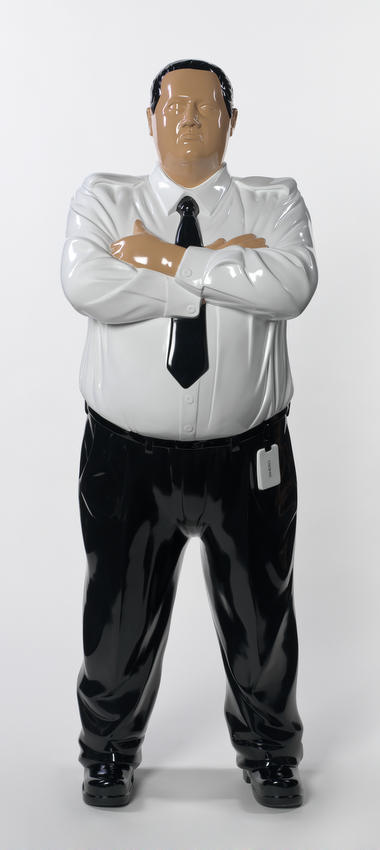We acknowledge the Traditional Owners of the land on which the Queensland Art Gallery | Gallery of Modern Art stands and recognise the creative contribution First Australians make to the art and culture of this country.

Michael Parekowhai / Kapa Haka (Whero) 2003 / Fibreglass, automotive paint / 188 x 60 x 50cm / Purchased 2009 with funds from Tim Fairfax, AM, through the Queensland Art Gallery Foundation / Collection: Queensland Art Gallery | Gallery of Modern Art / © Michael Parekowhai
Michael ParekowhaiKapa haka (Whero) 2003
Not Currently on Display
Kapa haka is the Māori term for traditional performing arts, an expression of dance and song.
Through this sculpture, Michael Parekowhai presents an ‘everyman’ who is recognisable as a staunch security guard, but unidentifiable as an individual. One of a series modelled on the artist’s own brother, it becomes a playful and incisive reference to performance in its many forms.
Motionless and imposing, Kapa haka (Whero) has his own role to play, and his presence might prompt us to consider ideas of showmanship, working life and cultural expression more broadly.
Michael Parekowhai is one of New Zealand’s most important contemporary artists, showing regularly in New Zealand and internationally in major exhibitions including the Asia Pacific Triennial of Contemporary Art (APT) in 1999 and 2006.
Parekowhai is known for his witty, larger-than-life sculptures, photographs and installations. Parekowhai was born in Porirua in 1968, of European (pākehā) and Māori (Ngāti Whakarongo) descent.
In 1990, he completed a Bachelor of Fine Arts at the University of Auckland’s Elam School of Fine Arts, and received a teaching diploma from the Auckland College of Education. He returned to Elam and in 2000 obtained a Master of Fine Arts.
His public artwork The World Turns 2011–12, a lifesized bronze sculpture of an elephant and native Australian kuril (water rat) is located near the riverfront at GOMA.
Discussion Questions
1. What does the sculpture communicate about our shared (universal) response to/reading of the human form?
2. What does it mean for audiences to share space with this man?
Activities
The term ‘everyman’ is derived from a fifteenth-century English morality play titled The Summoning of Everyman. In this play, the ‘everyman’ was devoid of definite marks of individuality in order to create a universality in the moral message of the play. Write a story or illustrate a scene from a situation that highlights the benefits of knowing the individual as opposed to the potential danger of an anonymous figure among a crowd of ‘everymen’.